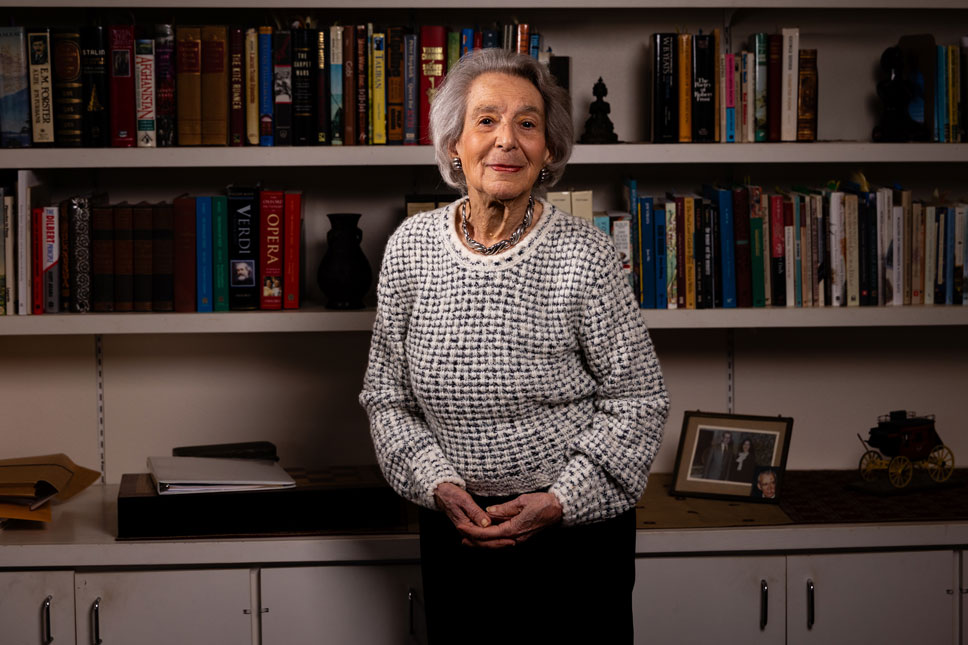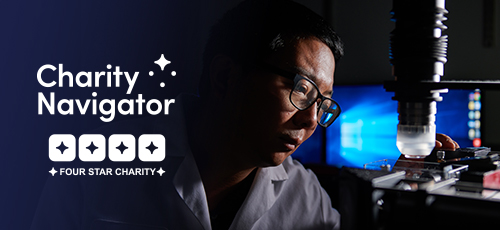Julie Hill: Securing a healthier world through science

Julie Hill and her late husband, Arthur Hill, personally witnessed the transformative power of biomedical innovation, making them strong believers in the value of science and longtime supporters of Scripps Research.
Julie, an Alexandrian Greek, met Arthur, originally from Australia, in graduate school at the University of Minnesota. “It was a remarkable marriage, a rich and enduring partnership that spanned many decades and many countries,” Julie says.
In 1968, Arthur was faced with a life-threatening disease when he was diagnosed with hairy cell leukemia, a rare blood cancer. The disease progressed rapidly, and he wasn’t reacting well to the available treatments at the time. As his condition worsened, he read an article in The New York Times covering a publication in the New England Journal of Medicine. This piece described Scripps Research’s efforts to treat this rare form of leukemia through an innovative treatment called 2-CdA (now marketed as Leustatin®).
Despite living on the East Coast and his doctor’s misgivings about trials in general, Arthur moved quickly to contact Scripps Research, and he was able to enroll in the clinical trial for 2-CdA as the 66th patient in a pool of 90 participants.
The results were extraordinary. “After a week of being on the drug, Arthur was told that he didn’t have any more leukemia circulating through his body,” says Julie. “It was the happiest day of our lives.” She attributes her husband’s remarkable recovery to the medical research behind the drug and Alan Saven, the clinician at Scripps Health who took over her husband’s care when he came to La Jolla. Scripps Research physician-scientists Dennis Carson and Ernest Beutler collaborated on the development of this lifesaving medication, and the institute’s General Clinical Research Center located in Scripps Green Hospital brought the drug from the labs to the clinic.
After experiencing the transformative science at the institute firsthand, Arthur and Julie stayed connected with Scripps Research, getting to know the scientists and trainees around campus and becoming ardent supporters of biomedical research. Arthur loved to write and became a volunteer with Scripps organizations, spending hours interviewing doctors and simplifying complex subjects into easily understandable stories.
Making their first gift in 1991, the couple contributed toward many initiatives at the institute over the years, including the building of The Arnold and Mabel Beckman Center for Chemical Sciences, a 165,000-square-foot research facility.
In 1997, Julie and Arthur decided to move from the east coast to San Diego to retire. When they would drive past Scripps Research, Julie recalls her husband saying, “They do good work there—they saved my life.”
While Arthur passed away in 2002, Julie remains grateful for the years the clinical trial gave back to her husband. “He lived eleven and a half more years after the trial, and his leukemia never came back,” Julie says.
Over the past several years, she has enjoyed getting to know several scientists. “I have the highest respect for the scientists at Scripps Research, and I want more people to know about the work here,” Julie says. Throughout her impressive career as an author, former telecommunications executive and researcher, she learned the importance of marketing and communications, and she hopes Scripps Research will gain higher levels of recognition for its extraordinary science locally, nationally and globally.
An avid philanthropist, Julie has a heart for many causes, generously supporting education, art, science and other programs across several countries. Today, she recognizes the changing landscape around scientific funding, especially for early-career faculty who must compete for diminishing grant funding for their programs.
Building on their legacy of support at Scripps Research, Julie and Arthur named Scripps Research in their estate planning, hoping their bequest could help lead to an even better understanding of human disease and the development of more treatments like 2-CdA.


